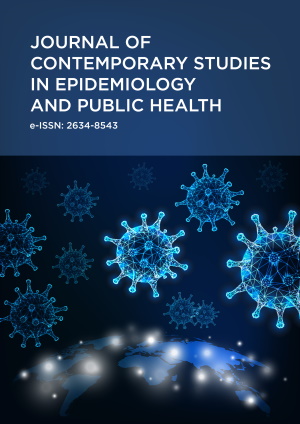Abstract
Introduction and Objectives: Man-made disasters can be grouped as technology and violence origin such disasters occur as a result of conscious or unconscious mistakes where chemical, biological, radiological, and nuclear threats are used. It has become significant for hospitals to prepare a plan, which includes information and practical actions, including all situations that require urgency and actions to be taken in emergencies that may occur in workplaces. Coronaviruses are a diverse group of viruses that infect many different animals and can cause mild to severe respiratory infections in humans. Two highly pathogenic coronaviruses of zoonotic origin, the severe acute respiratory syndrome coronavirus (SARS-CoV) and the Middle East respiratory syndrome coronavirus (MERS-CoV), emerged in humans in 2002 and 2012, respectively. At the end of 2019, the emergence of a new coronavirus, SARS-CoV-2, in the Chinese city of Wuhan caused an unusual viral pneumonia epidemic. In this study, hospital emergency management plan is examined to the currently effective pandemic element of COVID-19 disease.
Methods: It reviews the current situation and recommended actions to improve the preparedness of hospitals in five critical hospital roles during disasters: executing planning and coordination, maintaining disaster capacity, training and disaster drills with the broader health and public safety communities, protection hospital and staff, and surveillance as showing. In this context, coranavirus (SARS-CoV-2) COVID-19 hospital disaster emergency plan system model has been tried to be created. While creating the system method, it proposes a model of how the primary diagnosis and intermediate treatments will be handled in the risk method for the emergency room cases and the clinic, by handling confirmed and suspected cases through both the healthcare personnel and the medical supply system.
Results and Conclusions: As a result, the hospital emergency management plan can ease the emergency department workload, protect healthcare personnel, and control cross infection during the COVID-19 outbreak. Each hospital needs to create an emergency plan suitable for its own conditions. Hospitals can take interim measures, including online consultation, zoning, and epidemic priority to relieve pressure on clinical trials, reduce cross-infection, and strengthen protection of high-risk personnel.
License
This is an open access article distributed under the Creative Commons Attribution License which permits unrestricted use, distribution, and reproduction in any medium, provided the original work is properly cited.
Article Type: Original Article
J CONTEMP STUD EPIDEMIOL PUBLIC HEALTH, Volume 3, Issue 1, 2022, Article No: ep22003
https://doi.org/10.29333/jconseph/11975
Publication date: 06 Apr 2022
Article Views: 2203
Article Downloads: 1706
Open Access References How to cite this article
 Full Text (PDF)
Full Text (PDF)